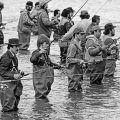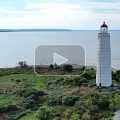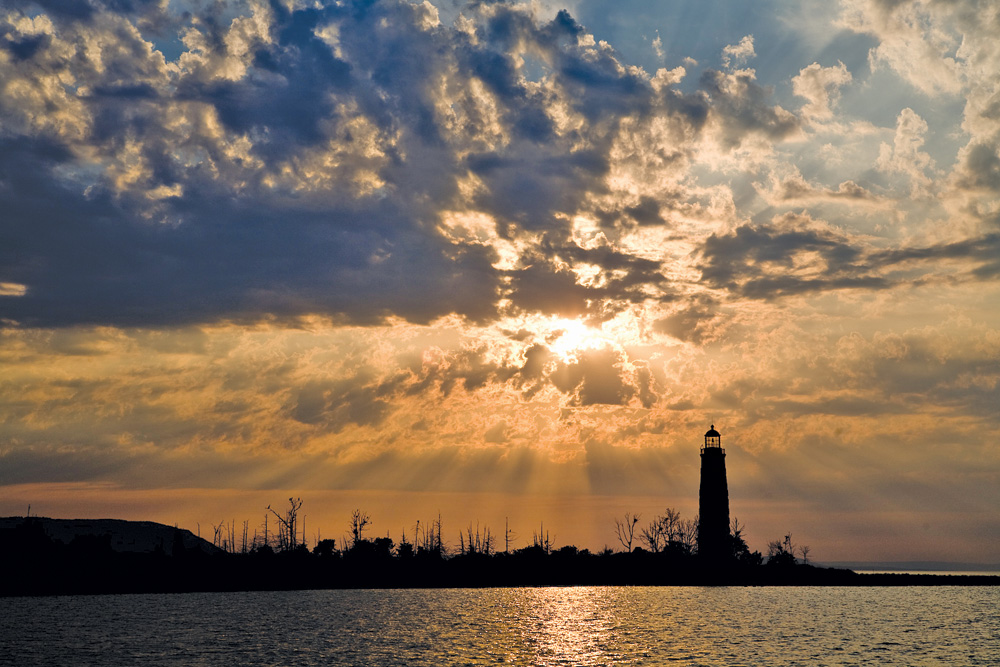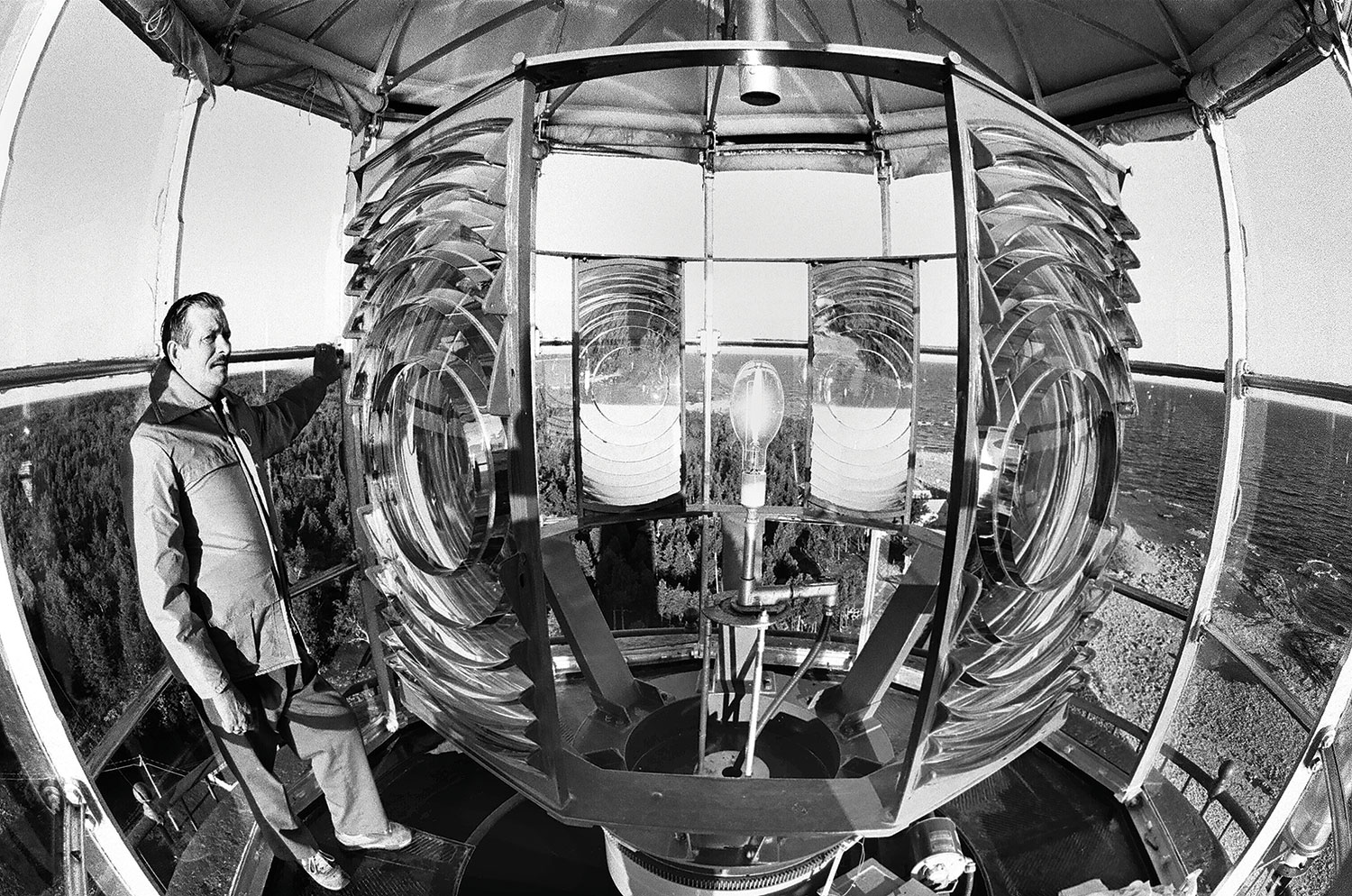
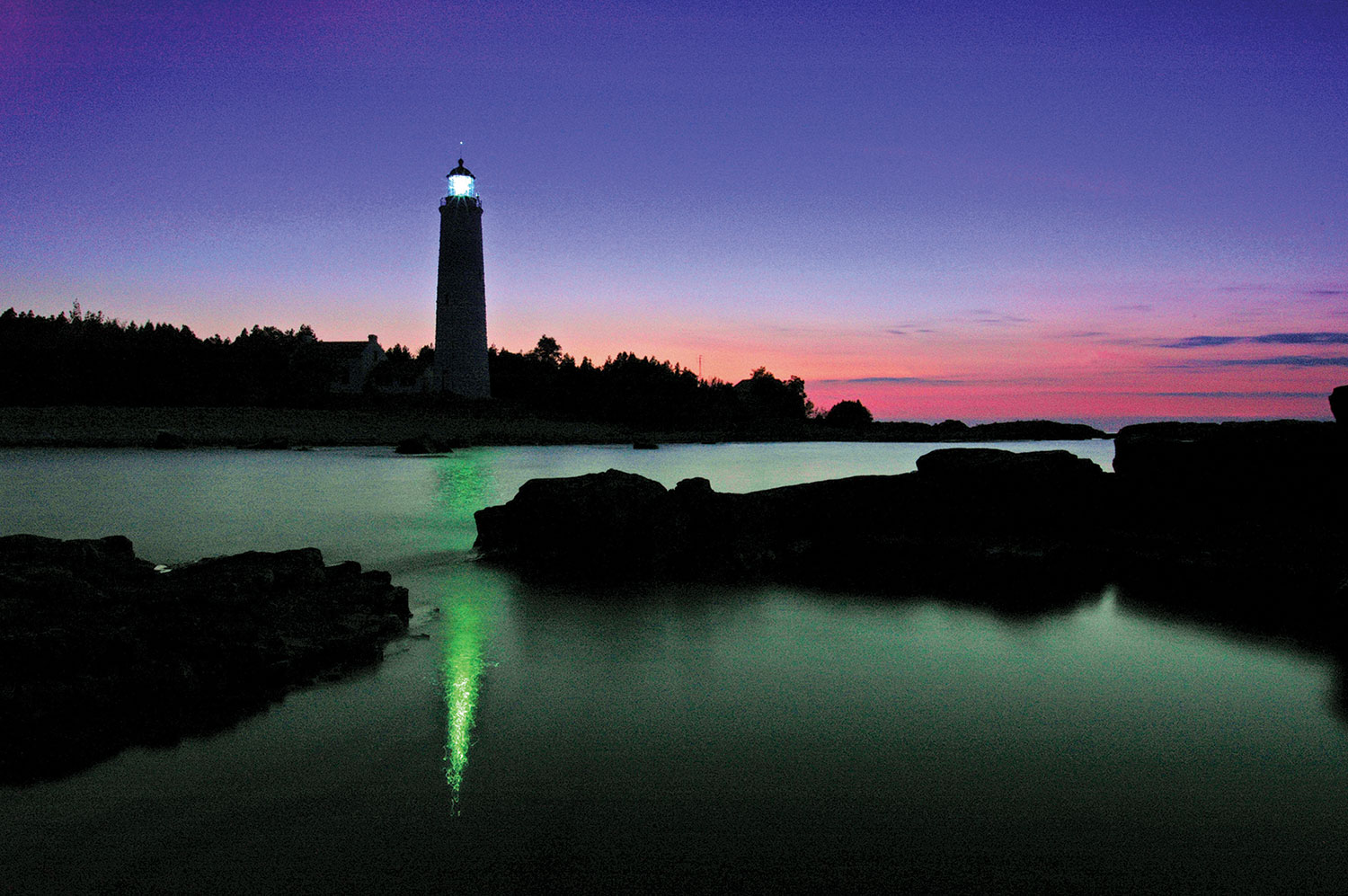
By Willy Waterton // Photography by Willy Waterton
To reach the lantern room of Cove Island Lighthouse, lightkeeper Jack Vaughan trudged up 101 stairs just as he had done for the last 13 years. But this time, in 1991, was different. Cove Island was the longest keeper-occupied lightstation in Ontario, staffed continuously from 1858 to 1991. When Jack left the island that fall, 130 years of history came to an end.
I first met Jack Vaughan during the fall of 1989. I had been asked to take nighttime photographs of the Cove Island Lighthouse for the newly formed Friends of Fathom Five National Marine Park. Jack and his wife Tilley’s warmth and hospitality were immediate, inviting me to a family dinner. Setting up my tent, I noticed Jack’s red steel skiff heading out to meet a passing fish tug. By the time the tent was up, Jack had returned with several whitefish and I watched in amazement as he filleted them in less time than it takes to read this sentence. Over a crackling fire, a pound of Crisco was melted in a huge cast iron fry pan.
The resulting tender, fried whitefish is one of the most memorable meals of my life. Over the years I boated out to visit Jack many times, and our friendship lasted until Jack’s death in 2008.
Standing on Gig Point, offshore of the northern tip of the Saugeen Bruce Peninsula, Cove Island Lighthouse marks the entrance of the main shipping channel into Georgian Bay. It was one of six lighthouses built in the 1850s—the so-called Imperial Towers, which stretch from Point Clark on Lake Huron to Christian Island on Georgian Bay and include Collingwood’s Nottawasaga Island Lighthouse.
Built from locally quarried stone, with walls 1.8 metres thick at the base tapering upward over 24 metres to the lantern room, Cove Island was the first of the six to be lit on October 30, 1858. A work crew from Paris, France, installed the lantern room’s cast-iron frame, panelled with 12 panes of glass capped with a copper dome and ventilator for the smoke and heat given off from the oil-fired Argand lamp. Inside the “gallery,” six thick Fresnel prisms magnify the light so it can be seen as far as 80 kilometres away. All of this original equipment, imported from France, remains here today.
In 1971, an underwater electrical cable brought in electricity to power the 500-watt mercury-vapour bulb and rotate the prisms. Jack and the assistant lightkeeper’s job descriptions changed. They were no longer required to fuel the light, sound the foghorn and wind the lantern’s turning mechanism by hand every four hours.They became custodians, tending the station’s seven red-and-white buildings and immaculate grounds. If machinery needed repairs they would phone the Canadian Coast Guard base in Parry Sound to send a technician by helicopter.
In 1991, I photographed the lightstation again to mark the end of manned lighthouses. Having just purchased a 16mm fisheye lens for my Nikon FM2 camera loaded with Kodak Tri-X film, I was excited to photograph Jack and the Fresnel lenses in the lantern room. The image appeared in my exhibition “Salt of the Earth: People of Bruce, Grey and Manitoulin,” and is now displayed aboard the MS Chi-Cheemaun ferry, from which you can see the Cove Island Lighthouse itself.
As you pass by, think of Jack Vaughan, the last lightkeeper on the Canadian side of the Great Lakes.






